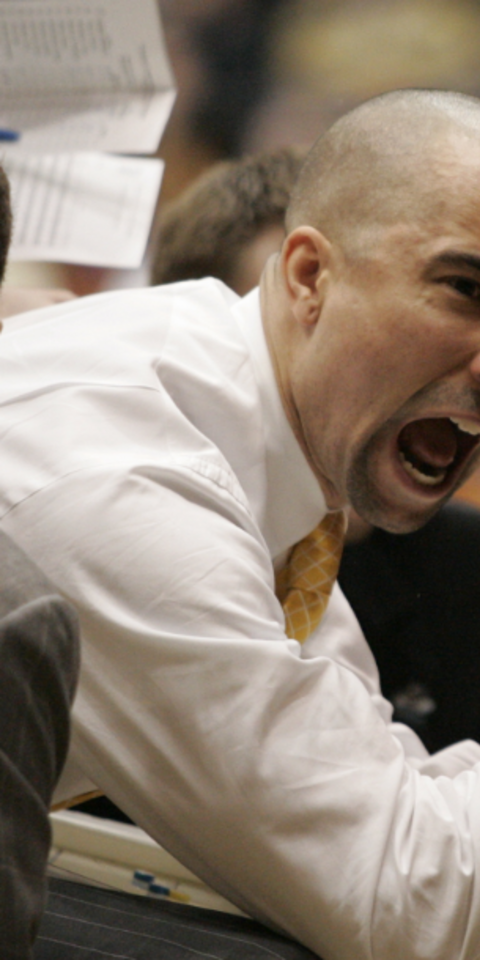March Madness is synonymous with upsets. A thrilling three weeks of buzzer beaters, and Cinderella stories captivates college basketball fanatics around the world. It seems like every year a lower-seeded team leaves a trail of shattered brackets and bewildered fans. At the heart of this madness? The underdog. So what truly makes a great March Madness underdog?
For bettors, March Madness underdogs present a tantalizing opportunity for a big payout. But, not all lower-seeded teams are created equal. Let's investigate the qualities that define a great March Madness underdog and aid in your quest to identify potential bracket busters.
Historical Precedence
The numbers don't lie - teams seeded No. 7 or worse have made remarkable runs to the Elite Eight in eight of the last 10 tournaments. At the end of the day, seeding really is just a number. It's up to you to put in the research and decide which team is more suited to the unique pressure of the single-elimination format of March Madness.
Offensive Rebounding
One of the most critical factors behind an underdog's success in the tournament is their ability to control the boards, especially on the offensive glass. Crashing the boards for second-chance opportunities is crucial in tight tournament games. No. 16 seed Fairleigh Dickinson grabbed 11 offensive rebounds in their efforts to upset the top-seeded Purdue Boilermakers last season.
Texas A&M's offensive rebounding was the backbreaker in their win in College Station. This one was particularly frustrating. Kentucky had a chance to extend the lead, instead #11 Garcia comes from nowhere and it leads to a 3 for #23 Radford. Need all 5 guys hitting the glass HARD pic.twitter.com/rbW0spmSgo
— Brandon Ramsey (@BRamseyKSR) March 15, 2024
Outstanding offensive rebounding teams extend possessions, create second-chance points, and demoralize opponents by capitalizing on missed shots. Relentlessness is a common denominator among underdogs in any sport. That's certainly the case in college basketball. Identify the teams who attack the offensive glass with reckless abandon by researching their offensive rebounding percentage. If they're in the top-50 you're in business. Texas A&M currently leads in TeamRankings.com college basketball offensive rebounding percentage with an insane 41.2% rate.
Three-Point Threats
Ultimately, underdogs win by playing high-risk/high-reward basketball. The three-point shot is the supreme equalizer in college hoops, allowing less-heralded squads to unseat giants.
Whether its pick up hoops at your local gym, or the NBA, elite three-point shooting is a game-changer. Teams that can consistently knock down attempts from deep can close gaps quickly - or extend leads.
A top-60 three-point attempt rate, combined with a respectable shooting percentage from downtown allows any March Madness underdog to stay in games.
Steal Specialists
Anyone who remember's Shaka Smart's VCU shocking the basketball world with a Cinderella run to the Final Four recalls their innate ability to press, trap and attack the basketball.
10 years ago today, Coach Shaka Smart leads VCU to an upset win over top seeded Kansas.
— TodayInSports (@TodayInSportsCo) March 27, 2021
VCU becomes just the third 11 seed to reach the #FinalFour #TodayInSports @VCU_Hoops #MarchMadness @VCUAthletics pic.twitter.com/h6hDHBuhrC
A hallmark of a formidable dark horse is a high steal percentage. Teams that excel in pressuring their opponents and disrupting offensive flow score easy transition points in bunches. A top-100 steal rate, or steals per play per 100 possessions is a key metric for your research. Haslametrics potential points off of breakaway steals is a great way to identify teams who excel at creating turnovers and score easy buckets in transition.
The top-seed Houston Cougars were on their way to a No.1 seed as National Championship favorites before an upset by the Iowa State Cyclones in the Big 12 Championship game. Ironically, these teams sit second and third in team steals per possession at 15.1%.
Proven Strength of Schedule
Analyzing a team's strength of schedule is key to handicapping March Madness. A battle-tested squad from a powerhouse conference very well may become a lower-seed in the NCAA Tournament. Yet, they are far more qualified than their higher-seed opponents who blew through mid-major competition all year.
A challenging regular season prepares underdogs for the battle ahead. Look for teams with a top-40 strength of schedule rating.
Efficiency & Luck
Analytical models like KenPom, Haslametrics and BartTorvik take into account the quality of a team's opponent with their adjusted efficiency rankings. Teams within the top-60 of adjusted efficiency rankings have proven they can compete at a high level all season.
Moreover, any Cinderella run involves a little bit of luck. Which KenPom tracks as "the deviation between a team's actual record and their expected record". You can also measure luck by looking at teams' close-game win percentage. Teams that demonstrate an ability to win in clutch late-game situations are primed for upsets when the pressure is on.
The Ideal March Madness Underdog Profile
Fundamentally, the ideal March Madness underdog is a team that combines ferocious offensive rebounding with a knack for steals and sharpshooting from downtown. Their statistical profile is generally rounded out with a top-60 adjusted efficiency rating, and a proven track record in close games. These teams have the formula to disrupt, surprise, and ultimately advance deep into the tournament.
As you're filling out March Madness brackets, keep an eye on teams that fit this mold. They may just be the ones to defy expectations and etch their names in tournament lore as the latest March Madness underdog story.




